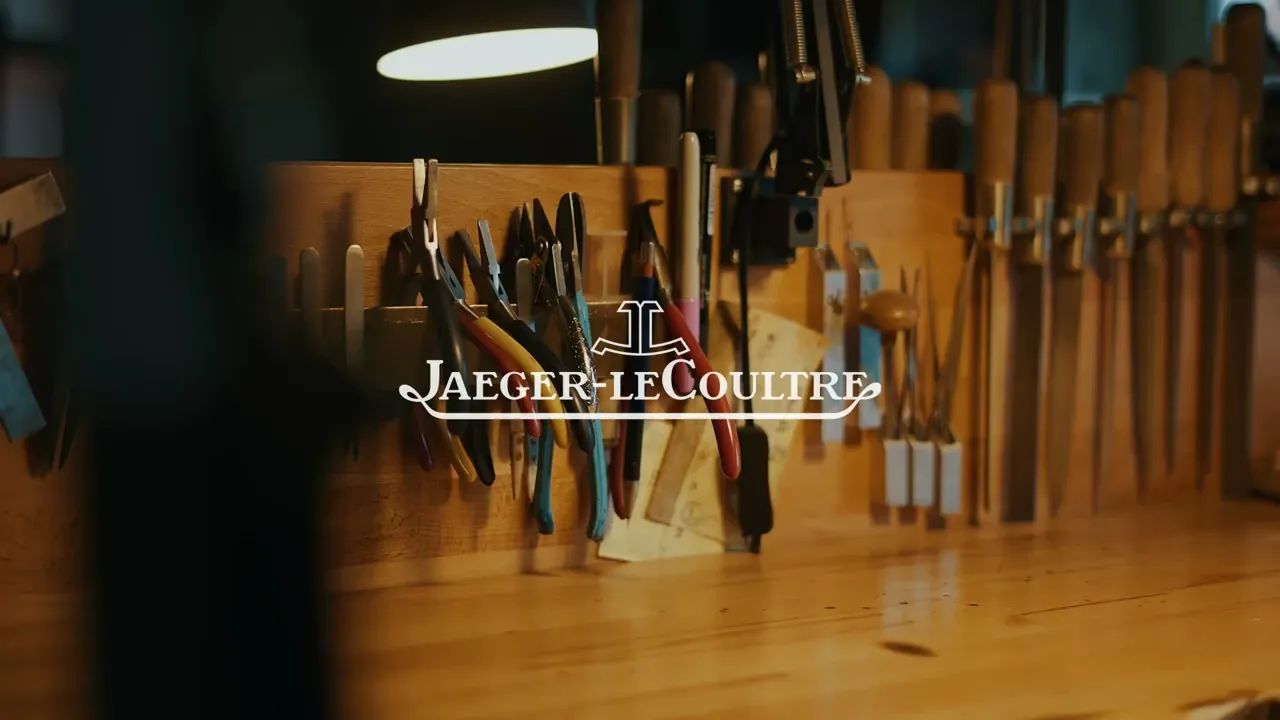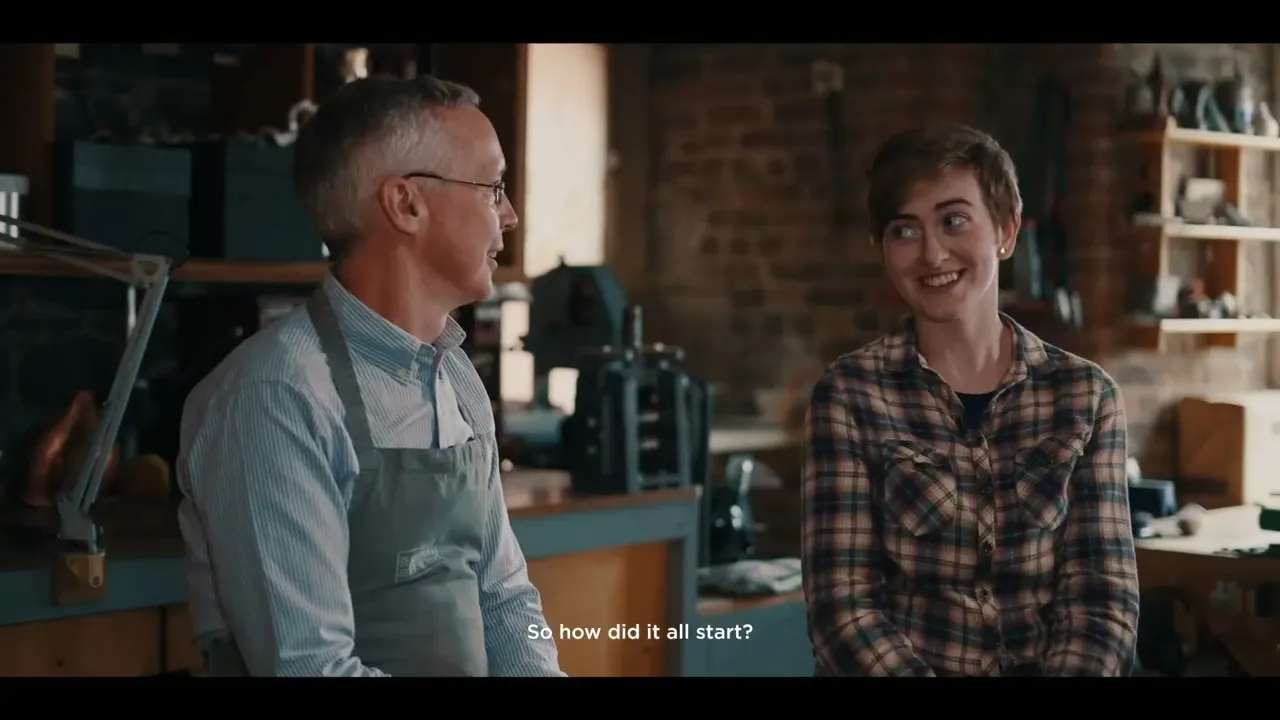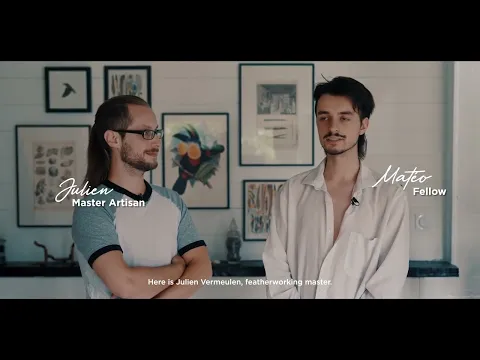- An educational programme established by Michelangelo Foundation in partnership with Jaeger-LeCoultre
- Bringing together duos of Master Artisans and talented graduates to support craft and ensure the transmission of skills to future generations

Jaeger-LeCoultre and Michelangelo Foundation announce the successful completion of the first stage of the inaugural edition of Homo Faber Fellowship. The seven-month programme began in Portugal in September with a month-long residential masterclass in creativity and entrepreneurship certified by ESSEC Business School.

Held at the Lisbon studio of the renowned Portuguese contemporary artist Joana Vasconcelos, the masterclass brought together 20 duos of Master Artisans and newly graduated talents (Fellows). ESSEC presented a bespoke programme to the participants, which included entrepreneurial vision, leadership skills, brand desirability, digital marketing and business planning – topics new to the audience of recent graduates, and essential knowledge for aspiring craft professionals.
Joanna Vasconcelos, who has been chosen as the ‘Godmother’ of this first Homo Faber Fellowship cohort, shared the artistic vision that has made her so successful – that of combining territorial and ancestral crafts with a modern point of view – and revealed her working methods in hands-on workshops. Further support was given by Passa ao Futuro design agency, which addressed the issues of design and sustainability.

During the masterclass, Jaeger-LeCoultre presented a design case study related to Art Deco and the Maison’s CEO, Catherine Rénier, together with Lionel Favre, Jaeger-LeCoultre’s Product Design Director, travelled to Lisbon to meet the participants and exchange ideas with them. Catherine Rénier shared Jaeger-LeCoultre’s vision and values related to craft and education – values rooted in a long history of facilitating the transmission of knowledge between masters and trainees to preserve vitally important skills for future generations.

The masterclass will now be followed by a six-month residential placement for each of the Fellows in the workshop of their corresponding Master. The Masters’ ateliers are located in five European countries – France, Greece, Ireland, Portugal and Spain – and the Fellows have been drawn from a variety of backgrounds and a diverse range of crafts, including ceramics, textiles, bicycle building, feather-work and basket weaving.
Beginning in late October, the six-month residential placement in the Masters’ workshops will focus on the development of practical skills. While the Masters will teach their traditional savoir-faire, the relationship is envisaged as a two-way exchange, with the Fellows bringing a modern sensibility to their work and enabling the Masters to see their crafts through fresh eyes. During their six-month residencies, the Fellows will be continuously mentored and will co-create an object with their Master, with the potential for it to be commercialised. The co-creations will be based on a theme related to Art Deco.

The 20 duos of Masters and Fellows for the inaugural Homo Faber Fellowship are as follows, together with names and locations of the Fellows’ schools:

FRANCE
- Marquetry: Pierre Henri Beyssac & Inès Rauch (Ecole Boulle, FR)
- Bicycle building: Sébastien Klein & Tom Even (Ecole Boulle, FR)
- Metalworking and engraving: Cédric Lamballais & Léandre Le Bail, (Ecole Estienne, FR)
- Featherworking: Julien Vermeulen & Matéo Laurent (Ecole Nationale Supérieure des Arts Décoratifs, FR)

GREECE
- Jewellery: Akis Goumas & Karolos Vlachiotis (Art Jewellery School, GR)
- Ceramics: Giannis Zois & Shokhrukh Rakhimov (Kamoliddin Behzod Institute, Uzbekistan)
- Textile design: Christiana Vardakou & Emily Criddle (University of Edinburgh, UK)
- Stone sculpture: Tom von Kaenel & Clara Coujaty (Ecole Boulle, FR)

IRELAND
- Ceramics: Mike Byrne & Noel Donnellan (Van der Kelen Logelain, BE)
- Silversmithing: Seamus Gill & Claire Mooney (Ulster University, IRL)
- Cabinetmaking: Stephen O’Briain & Richard Butler (Atlantic Technical University, IRL)
- Furniture making: Sasha Sykes & Jackson Byrne (Dun Laoghaire Institute of Art, Design and Technology, IRL)

PORTUGAL
- Stone sculpting: Alzira Antunes & Corentin Fossemo (L’Association Ouvrière des Compagnons du Devoir et du Tour de France, FR)
- Textile design: Vanessa Barragão & Yaroslava Shkurat (Ecole Duperré, FR)
- Basketweaving: Isabel Martins, & Alba Fernandez Castro (Escola Massana, ESP)
- Cabinetmaking: Tomás Viana & Soraia Santa (Ricardo Espírito Santo e Silva Foundation, PT)

SPAIN
- Engraving: Dan Benveniste & Guillermo Garcia (Artediez, ESP)
- Gold thread embroidery: José Luis Sanchez Exposito & Gonzalo Garcia Cuevas (Centro de Formación Profesional Dolores Sopeña, ESP)
- Textile design: Camila Puya de Arcos & Sofia Lausero (Escola Massana, ESP)
- Metalworking: Ramón Recuero Ibáñez & David González Parrilla (Escuela de Herreros Ramón Recuero, ESP)


















About Joana Vasconcelos
One of Portugal’s most celebrated contemporary artists, Joana Vasconcelos is known for her monumentally scaled sculptures and installations that playfully address questions of national identity, femininity and consumerism. She makes wide use of traditional Portuguese crafts, enveloping commercially produced, everyday objects in crocheted or knitted material, contrasting craft and mass-production and alluding to our relationship with each. She has exhibited all around the world, including at the Guggenheim Museum Bilbao, Palace of Versailles and MassArt Art Museum, Boston. Founded in 2012, the Joana Vasconcelos Foundation aims to preserve the artist’s work. In addition, the Foundation supports projects that contribute to the promotion and development of arts and cultural education. As ‘Godmother’ of the inaugural edition of Homo Faber Fellowship, Vasconcelos hosted a month-long masterclass in her atelier in Lisbon and will continue to mentor the Fellows throughout the programme.
fundacaojoanavasconcelos.com
About ESSEC
Founded in 1907, ESSEC is one of the world’s top management schools, with more than 7,000 students and a faculty of 169 full-time professors in France and Singapore. With a wide range of management training programmes, partnerships with the world’s best universities, and a network of 65,000 alumni, ESSEC fosters a tradition of academic excellence and a spirit of openness in the fields of economics, social sciences and innovation. For Homo Faber Fellowship, ESSEC has developed a bespoke programme to equip Fellows with essential business skills. essec.edu
About Michelangelo Foundation
The Michelangelo Foundation for Creativity and Craftsmanship is a non-profit institution based in Geneva, which champions contemporary craftspeople worldwide with the aim of promoting a more human, inclusive and sustainable future. The foundation seeks to highlight the connections between craft and the wider arts and the design world. Its mission is to both celebrate and preserve craftsmanship and its diversity of makers, materials and techniques, by increasing craft’s everyday recognition and its viability as a professional path for the next generations. From engaging educational programmes such as the Summer School to its signature digital project
the Homo Faber Guide, the international exhibition the Homo Faber Event, and the educational programme, the Homo Faber Fellowship, the foundation is fostering a cultural movement centred on master artisans and rising stars. michelangelofoundation.org / homofaber.com
About Jaeger-LeCoultre – The Watchmaker of Watchmakers
Since 1833, driven by an unquenchable thirst for innovation and creativity, and inspired by the peaceful natural surroundings of its home in the Vallée de Joux, Jaeger-LeCoultre has been distinguished by its mastery of complications and the precision of its mechanisms. Known as the Watchmaker of Watchmakers, the Manufacture has expressed its relentlessly inventive spirit through the creation of more than 1,400 different calibres and the award of more than 430 patents. Harnessing 190 years of accumulated expertise, La Grande Maison’s watchmakers design, produce, finish and ornament the most advanced and precise mechanisms, blending passion with centuries-old savoir-faire, linking the past to the future, timeless but always up with the times. With 180 skills brought together under one roof, the Manufacture creates fine timepieces that combine technical ingenuity with aesthetic beauty and a distinctively understated sophistication. jaeger-lecoultre.com





